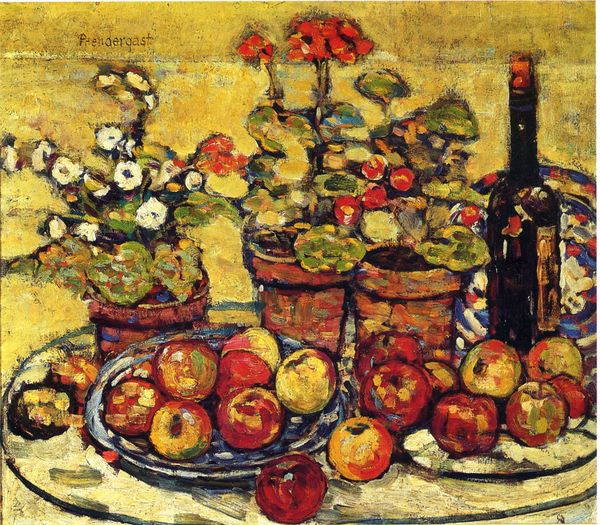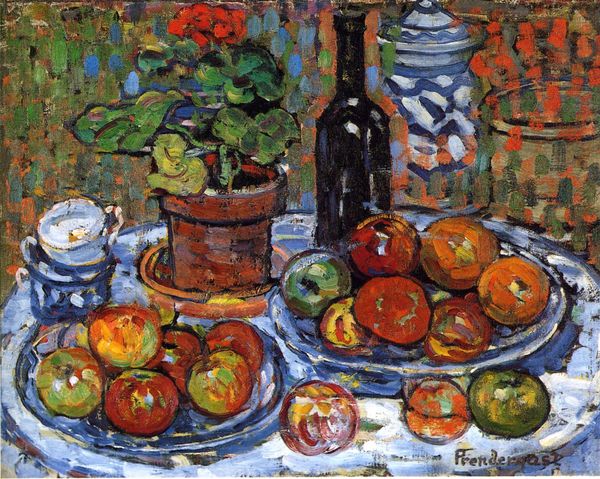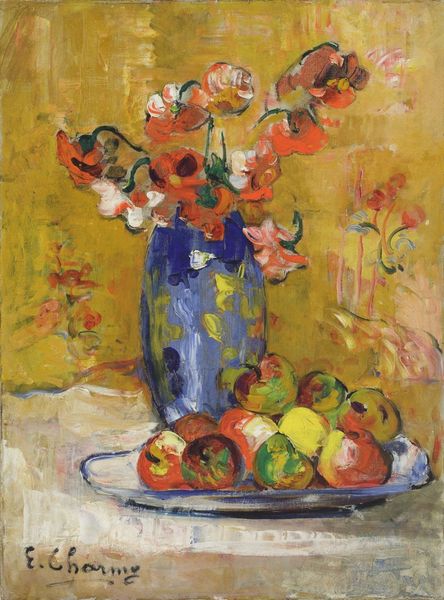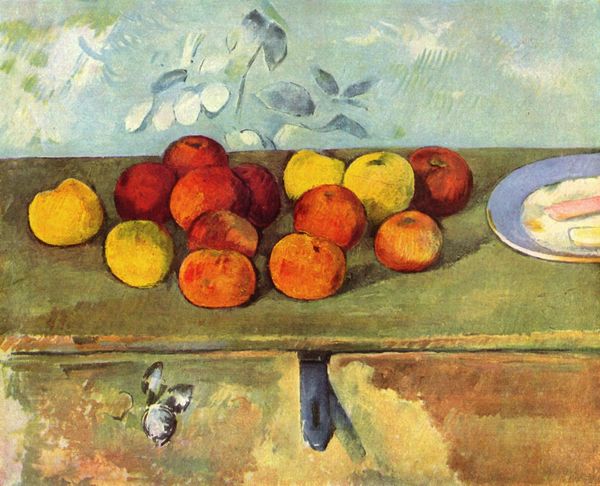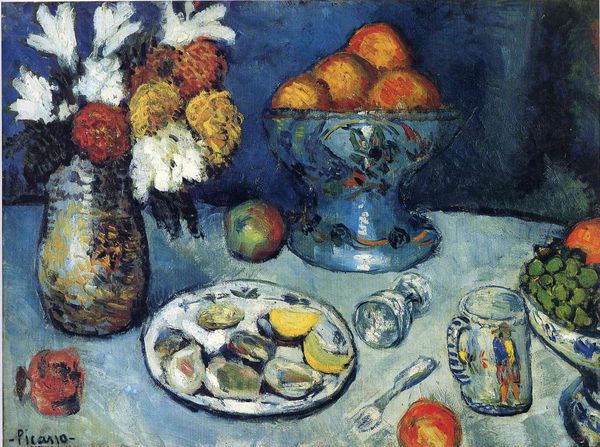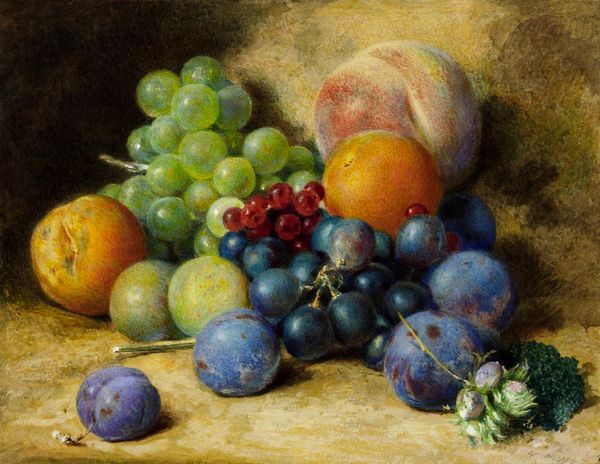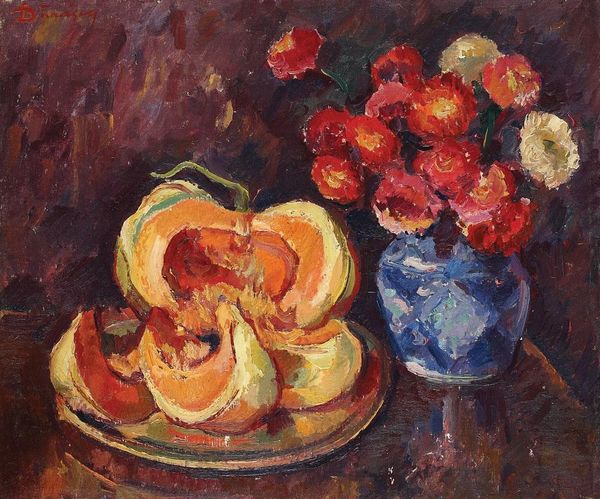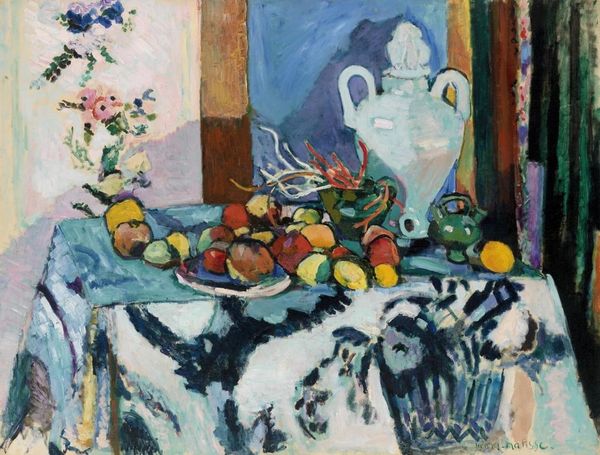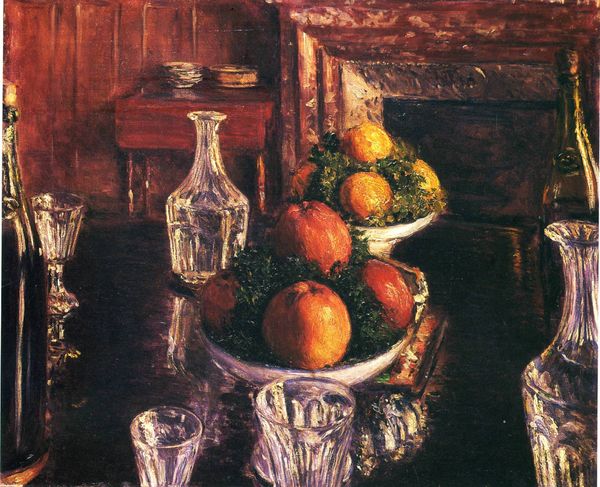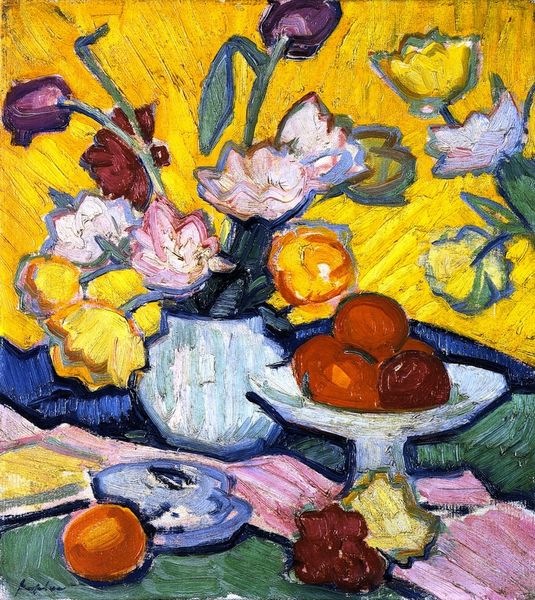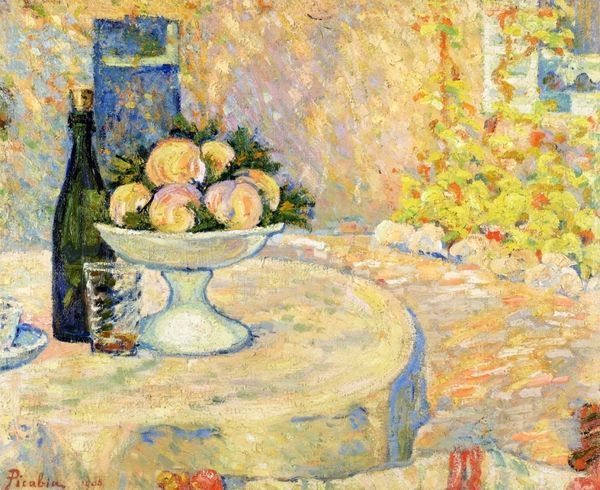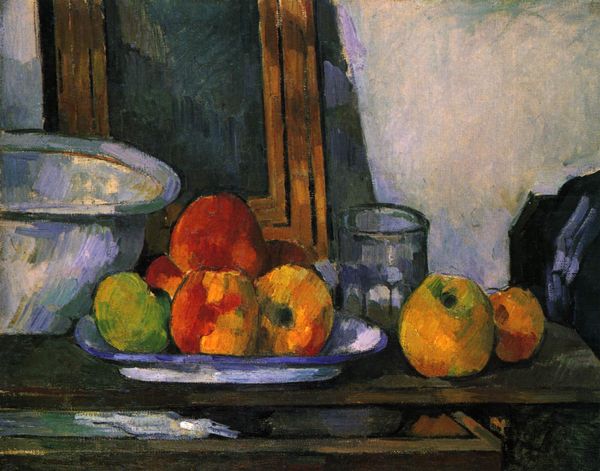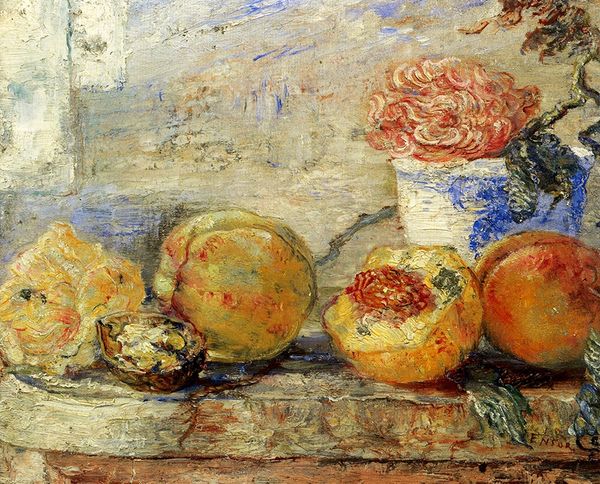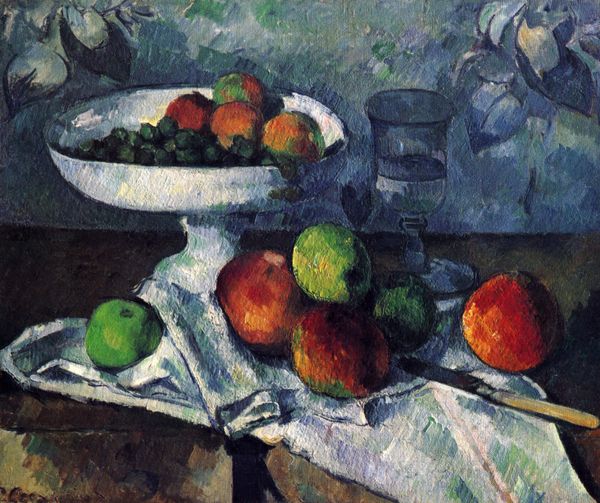
Copyright: Public domain
Curator: Childe Hassam created this oil painting titled "Still Life, Fruits" around 1904. Editor: Immediately, I see abundance and decadence. The colours are rich, and the sheer amount of fruit piled up is visually overwhelming in a pleasant way. Curator: Hassam, while considered an American Impressionist, moved increasingly towards Post-Impressionism around this time. We see that departure here, particularly in his bolder use of colour and texture. Knowing his work often engaged with class and societal structures, do you think there's an intended commentary? Editor: Absolutely. This isn't just fruit; it's a symbol. Fruit, since antiquity, has been tied to fertility, prosperity, even temptation. The overflowing bowls – rendered in gleaming silvers – plus the two glasses of wine suggest a life of indulgence. It reflects a culture enjoying excess. Curator: He painted this during the Gilded Age, and he wasn't necessarily a detached observer. It’s easy to imagine the painting was displayed in affluent homes celebrating wealth and power. However, let’s consider Hassam's typical audience. Were they equipped to be self-critical? Was it even his intent? Editor: Good point. The impressionistic brushstrokes soften any potentially harsh critique. It could be purely decorative, an aspiration image rather than a critical mirror. Curator: Beyond the socioeconomic lens, there's also the simple joy of capturing light and color. The play of light across the different surfaces of the fruits – the waxy plums versus the translucent grapes, for example. I would call the overall effect dazzling. Editor: I agree. The painting vibrates with life. Look at the conscious placing of darker plums clustered in the bottom third as though to give structure to a rather ‘chaotic’ cornucopia above them! Each element points towards themes of celebration and fulfillment that perhaps transcend its original context. Curator: Well, exploring this work offers insights into the nuances of interpreting symbolism across contexts. Editor: It reminds us that art can function on multiple levels simultaneously—as both social critique and aesthetic pleasure.
Comments
No comments
Be the first to comment and join the conversation on the ultimate creative platform.
